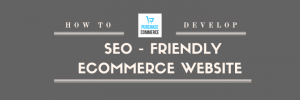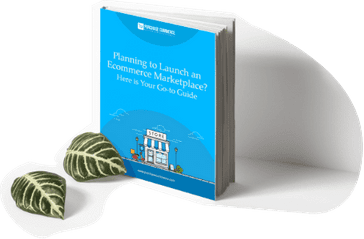How to choose your ecommerce website templates like a pro!
Ecommerce websites open the door to the future of shopping. Currently, there are 12 to 24 million ecommerce websites around the world. Therefore, to stand out from the crowd, you have to design your ecommerce website in such a way that provides a wonderful shopping experience for your customers.
The templates make the process of building the ecommerce website easy for everyone. It decides the look and feel of your online storefront, which is the entry gate for your ecommerce store. But how does a normal website template is different from an ecommerce website template? What are its unique traits?
Choosing a perfect ecommerce website template
It is not that easy for anyone to choose a perfect ecommerce website template. There is a lot of brainstorming involved in selecting the right template. This article explains the key factors to be kept in mind to choose your ecommerce website templates like a pro.
1. Analyzing your ecommerce website’s need
Purpose: Not all templates suit your ecommerce website needs since each template has its features. The first thing you should understand while choosing the templates is to figure out the key functionalities. For this, you need to be specific about your business need, its objective and your target customers’ demand.
For example, an ecommerce website designed for selling apparels and cosmetic products differs from the website of online service providing like drop shipping.
Essential features: Most of the ecommerce website templates include all the basic features. It may require redesigning if you want to include any specific features for your particular needs. So, if you are not familiar with ecommerce website design features, then try to find answers for the following questions:
-
Do you need any unique look for your ecommerce store? Which layout would fit your store design?
-
What kind of structure do you want for your home page and the interior pages?
-
Is it required to include more text or graphics to any pages or do you need an image gallery?
Brand fit: When you’re selling a specific product niche, then you should opt for a website template that suits all your needs. Your website’s visual and the theme should fit your brand name and engage with your customers. Make sure your storefront looks attractive since it’s the first impression for your customer.
2.Choosing the template design
A good template design not only has an amazing design and great look but it also has any great functionality that helps to run your ecommerce store successfully.
Stunning design: Ecommerce websites must have an amazing design to attract customers. The visual appearance must have a balanced color, enough space for all your content, and a different layout for each page. There should be larger and vivid images of the products that can capture the customers’ attention easily.
You should also consider the structure of the website, how the products are organized and displayed. It should highlight the best-selling product, which helps to improve sales. You can also include a cohesive design experience by creating touchpoints from the home, category, product page to the checkout page.
Intuitive interface: Ecommerce website must work in a way that matches your customers’ expectation and it should be easy to navigate. Intuitive interface improves the user experience. Providing an intuitive interface will help the customers to complete their tasks without any interruption. Templates must provide a faster integration of any extra features and it should be easy to manage the setup process.
3. Must-have template features
Highly customizable theme: Since ecommerce website grows rapidly, there is always a need for changing the features or functionality of your website. Your template must be highly customizable to adapt to those changes. You must be able to change the layout of your pages, product description, product images, checkout process, and finally the visual appearance of your storefront.
Mobile-friendly and responsive: If you are aiming for high sales in your ecommerce website, then you should opt for a mobile-friendly template. Your online store must be responsive enough to accommodate all devices’ screen size.
"According to research reports, nearly 49% of consumers use mobile phones for shopping.”
Using Progressive Web App (PWA) will be the most effective tool since it provides faster optimization to your ecommerce website irrespective of the screen size.
Improved cross-browser compatibility: Customers use different web browsers like Google Chrome, Firefox, or Safari to access your website. So, the data format will differ from one browser to another browser. Ecommerce website must be highly accessible for various browsers on both mobile and desktop.
Faster page loading experience: It is reported that almost 50% of the customers leave the ecommerce website if it takes more than 3 seconds for the page to load. So, it’s important to have a lightweight page along with responsive pages. Making use of the latest technology will help you have a fast-loading and responsive page.
4. Nice to have template features
SEO-friendly website: Search engine optimization could increase traffic to your website and boost organic visibility. Your website must be SEO-friendly to allow search engines to crawl product details and description.
Marketing integration: With so many ecommerce websites, it becomes harder to stand out from the competitors. To improve your sale, your template must be able to integrate third-party marketing tools for additional benefits. It should support doing marketing campaigns through various channels.
Trouble-free social sharing: Social media is the easiest way to reach a high number of people. Therefore, your website design must provide an easy way of sharing data about the products on social media.
“According to the Stat Counter report, there are 3.2 billion social media users worldwide and still growing fast.”
5. Template cost & pricing
Readymade templates: There are many free and paid templates available for you to build your ecommerce site. Free themes may be available as a part of your ecommerce platform, but they will have only some basic features.
If you want a specific template to match your brand, you can choose paid readymade templates that are designed as per the demands of popular industry categories like apparels, footwear, home appliances, furniture, etc.
Custom design templates: If you want to be unique, it is better to go for custom design templates as per your need. For this, you can choose an ecommerce website builder to design your template or you can hire expert ecommerce developers to work on your template design. Whatever the option you choose it costs you more than the readymade templates and you should be very clear with your requirements.
Angular Material Design ecommerce templates
To run a successful ecommerce store, it is imperative to choose templates that include all features to improve your site usability. Mostly, Angular Material Design ecommerce templates are fully responsive to build a mobile-friendly site.
Purchase Commerce ecommerce platform is built with Angular Material Design templates that have built-in color palettes, highly customization features and multi-level drop-down navigation. So, whatever be your business model, our Angular themes fit easily for your brand. For any queries regarding themes, connect with our design consultants for choosing the right ecommerce template.








